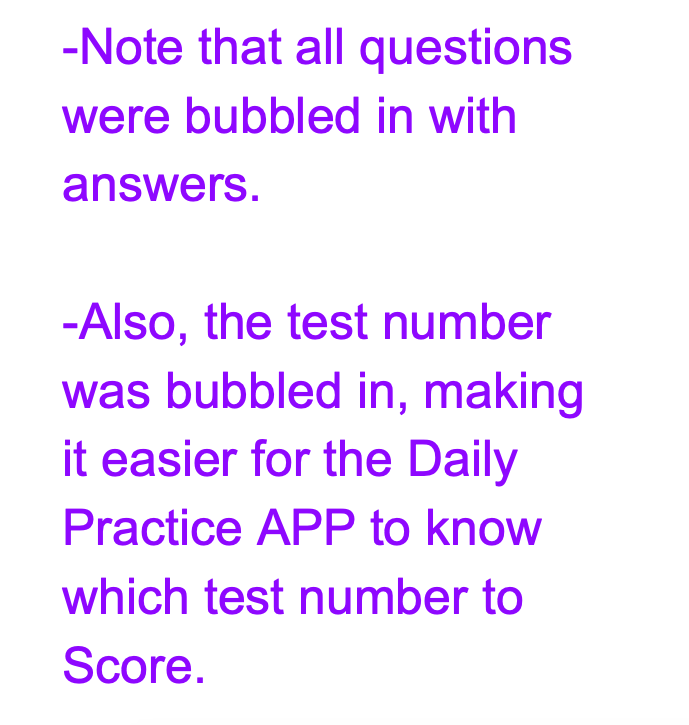Basic SAT Triage
SAT Triage, in a nutshell, is a means to improve your score as efficiently as possible by prioritizing questions you encounter on the test. Basically, you first want to answer the questions that are easy or make more sense to you. You will save the more challenging ones by marking them for later, once you’ve completed all your easier questions.
In basic SAT triage, there are two levels; for more advanced students, SAT triage will be three levels.


Two-Level SAT Triage
Though the term triage originated as a 3-part classification of the wounded seeking medical attention in WWI hospitals, the term has been appropriated for test prep. In this context, triage is a means of assigning priority in answering questions for test-takers.
In 2-level triage, you’ll proceed through the questions of each section of the test sequentially. For easy questions, you’ll just answer them as you encounter them. For questions that are perplexing or seem to take more time than usual, you’ll mark those. Rather than the old method of marking an asterisk by the question number, you’ll want to mark the numbers to the difficult questions at the top of your answer sheet. This way, you needn’t worry as much about stray marks affecting your bubbled-in answers. That could affect your score and we want to stay away from anything that can lower your score.
You’ll still put an answer for these questions, whether you are confident or not that your answer is correct. For now, a guess will suffice. But, you’ll mark them at the top of your answer sheet and return to them later if and when you have time.
Basically, you want to use your time and energy strategically: spend your time and resources answering questions you understand or are mostly confident you can answer correctly. For the rest, mark them. While you’ll still put an answer for these, you’ll be answering those questions within your expertise first.
Then, if you have time at the end of the section, return to those questions you marked. You can address harder questions, but only after you’ve worked on the easier ones.

Advanced SAT Triage: 3-level triage
If you’ve taken at least 2-3 practice/real tests and/or have scored a composite of 1300+, you can consider using 3-level triage.
Just as in 2-level triage, your first level questions are the ones whose answers you feel fairly certain you can answer easily.
Now comes the tricky part: for questions that are befuddling, you have to make the distinction whether the question is a level 2 difficulty or level 3 difficulty for you. These are all subjective measures. So, remember, you are the judge.
For some of you, math might come easily and you have only 2nd level questions marked and no 3-level. However, you might have an abundance of 3-level questions in the Reading Section. Or, vice-versa. Whatever works for you is fine.
As you implement triage, you’ll decide in practice what to mark for your difficult questions. And which level of difficulty each is for you.
Rule of Thumb for 3-Level Triage
Generally, if the question is only slightly more difficult than most of the others or would require a little more time than usual, mark it on the top of your answer sheet. If it is a question you don’t even know where to begin or seems like it would take at least a couple of minutes to review the passage or do the math work, mark it atop your answer sheet with an asterisk (*).
Regardless whether it is a level-2 or level-3 question, you’ll still answer it. Put your best guess for the moment. It can be a complete guess or an educated guess. You just want to move on quickly. “Let it Go” as the song says.
Then, if you have time at the end of that section, return to the level-2 questions and complete those to the best of your ability. Time permitting, once you complete the level-2 questions, move onto the level-3 questions.
This will take a little trial and error before you have it down. So, the more practice you have with triage, the better.
Triage is Absolutely Important for Review
Whether you’re doing self-prep or guided prep, you’ll want to mark all your triaged questions at the top of your answer sheet on a practice test.
This way, when you review the test, you can review not only the questions you marked incorrectly, but also those you had difficulty with. Often, students will guess and earn the point for a particular question, but still not understand it. It might be that there is a faster/more efficient method for solving the question. Or, it might be that a completely different approach would help. Regardless, you want your review to include those questions you found difficult. As hard as it might be ego-wise, you need to address your weaknesses on the test. That’s the best way to improve your SAT score.
Conclusion
There is some subtlety for reviewing your question list, but that’s another topic. For now, just start to use triage when taking your practice SAT. Though it might take a while to make it second nature, it will help you improve your score vis-a-vis time allocation and also for review.
Good luck on all your tests!